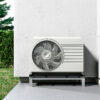As the leaves change color and the air turns crisp, homeowners are reminded that winter is just around the corner. Fall is the perfect time to prepare your home for the colder months ahead, and one critical aspect of winterizing your house is addressing leaky windows and doors. If you want to keep your home cozy and energy-efficient this winter, follow these informative tips to seal those drafts and ensure a warm and snug living space.
1. Assess Your Windows and Doors
Before you embark on sealing your windows and doors, it’s crucial to assess their condition. Inspect the frames, glass panes, and weather stripping for any signs of wear, damage, or gaps. Look for cracks, peeling paint, or visible light passing through when they are closed. Identifying problem areas is the first step in addressing draft issues effectively.
2. Weatherstripping Magic
One of the most effective ways to seal gaps around windows and doors is by using weatherstripping. This handy material comes in various forms, including adhesive-backed foam tape, V-strip, and door sweeps. Measure the gaps and choose the appropriate type of weatherstripping to fit snugly. Apply it to the edges of doors and windows to create a tight seal. Don’t forget to replace worn-out weatherstripping from previous years.
3. Caulking Is Key
For sealing gaps and cracks in window frames and doorframes, caulking is your best friend. Check for any visible openings or cracks and apply caulk to seal them shut. Pay close attention to the areas where the frame meets the wall. Silicone-based or latex caulk is a great choice for this task. It not only seals gaps effectively but also prevents moisture from infiltrating your home.
4. Check the Window Panes
If you have aluminum sliding doors or windows, inspect the glazing around the glass panes. Over time, the glazing putty can become brittle and crack, leading to leaks. Carefully remove the damaged putty and replace it with fresh glazing. This not only improves energy efficiency but also enhances the appearance of your windows.
5. Use Draft Stoppers
Draft stoppers, also known as draft snakes, are a simple yet effective solution for sealing the gap at the bottom of doors. You can purchase them at a hardware store or easily make one at home by sewing a fabric tube filled with insulating material. Place the draft stopper at the base of exterior doors to prevent cold air from sneaking in.
6. Consider Window Film
Window film, applied to the interior of your windows, can significantly improve insulation. It forms a barrier that helps retain heat while reducing drafts. Choose a clear or heat-reflective film for a discreet solution that doesn’t obstruct your view. Window film is an excellent option for homes with older or single-pane windows.
7. Upgrade to Energy-Efficient Windows and Doors
If your windows and doors are beyond repair, consider investing in energy-efficient replacements. Modern aluminum sliding doors, for example, often come with advanced insulation features that can make a substantial difference in maintaining a comfortable indoor temperature. Energy-efficient windows and doors not only enhance your home’s insulation but can also lead to long-term energy savings.
8. Don’t Forget the Attic and Basement
While you’re addressing drafts in your living spaces, don’t overlook the attic and basement. Insulate these areas adequately to prevent heat from escaping and cold air from entering your home. Proper insulation in these spaces can significantly impact your home’s overall energy efficiency.
9. Schedule a Professional Energy Audit
For a comprehensive assessment of your home’s energy efficiency and to pinpoint areas of improvement, consider scheduling a professional energy audit. An energy auditor can use specialized equipment like thermal imaging cameras to identify hidden drafts and areas of heat loss. Armed with this information, you can prioritize sealing efforts effectively.
10. Embrace the Warmth of Curtains and Blinds
In addition to sealing gaps, consider using curtains or blinds to trap heat and block drafts. Thick thermal curtains can add an extra layer of insulation to your windows. Close them at night to keep the warmth in and open them during the day to let the sun’s natural heat in.
By following these informative tips and taking the time to seal leaky windows and doors this fall, you can create a cozier, energy-efficient home for the winter months ahead. Not only will you enjoy a more comfortable living space, but you’ll also likely see a reduction in your heating bills. So, roll up your sleeves, gather your supplies, and get ready to embrace the warmth and comfort of a well-sealed home this winter season.










